Casting a spell
If Butterbeer was the star turn in the original Wizarding World’s food and drink line-up, then the wands sold at Ollivanders were the hit item of merchandise. Rather than simply expanding the selection available in the larger Ollivanders in Diagon Alley (and the Gregorovitch store in Carkitt Market), Universal had more ambitious plans.
“When you come to Diagon Alley, you can actually practice your magic, practice your spells,” says Thierry Coup. “When you buy a wand, you get a map with it that shows you where all of these magical places are, and you can go and practice your spells in a shop in front of a window, and when you cast a spell something magical happens in the window. It's great.”
The original wands would still be available, priced at $34.95 plus tax. For an extra ten dollars, guests would now be able to buy interactive wands that would enable them to perform “spells” in select locations in Diagon Alley and Hogsmeade (to retrofit the technology into Hogsmeade, many animations that previously ran on a loop were converted to be triggered by the wands).
In order to perform a spell, guests would be required to navigate to a brass marker, which would indicate the wand motion that should be made. If the budding wizard or witch achieved the correct motion, then an event would play out.
The technology behind the wands is actually deceptively simple, and is based on infrared light. Each wand is equipped with a reflective tip, covered by a filter. These reflect infrared light emitted by lights attached to cameras that are pointed at the spell-casting locations, enabling a computer program to track the reflected light and ascertain that the spell has been performed correctly.
Bringing Diagon Alley to life
In addition to the shops and rides, Universal also planned to include live entertainment as a core part of the Diagon Alley offering. The newly-devised Carkitt Market would host a stage that could accommodate performances, enabling the company to deliver on Mark Woodbury’s promise to bring the characters of Harry Potter’s world to life within the second Wizarding World.
“Much like Hogsmeade, we really wanted to figure out a way of getting certain music into the entertainment programme,” says Mike Aiello, Universal’s Director of Entertainment – Creative Development. “With Diagon Alley being a place of commerce, we were trying to figure out how we could fit that into this architecture. The Wizarding Wireless Network [a radio station based in Hogsmeade] became an outlet for us to say ‘we know that there’s a radio station that wizards listen to.’ Examining the fiction, we found a line in the books where Mollie Weasley says that she’s a huge fan of a singer named Celestina Warbeck. Okay – there’s a single line here, we’ve got to figure out something with this. Who is Celestina, and how can we bring her into the world of Diagon Alley?”
“We worked with Warner Bros. and discovered that there were four song titles that J.K. Rowling had written. Just song titles, and I think one lyric line for one of the songs. We said ‘Would you be opposed to us creating all the music and lyrics for these songs?’ And they said ‘Yes, let’s try this out’. So we investigated who she reminded J.K. of – if there was a singer in existence today who most closely reminded J.K. of Celestina, who would it be? And immediately they said ‘The inspiration for Celestina was Shirley Bassey’. So we said ‘Okay, we’re starting to find some foundation here with which we can build a show experience.’”
The resulting show would feature Celestina Warbeck and the Banshees, live in concert. “We hired two amazing composers - Alan Zachary and Michael Weiner - working with us and Warner Bros. to write these songs from scratch. Using all the inspiration we had from J.K. Rowling, we've come up with a really great, one-of-a-kind show that allows us to kind of expand the brand. Based on a single line, we were able to build something that people haven't seen before.”
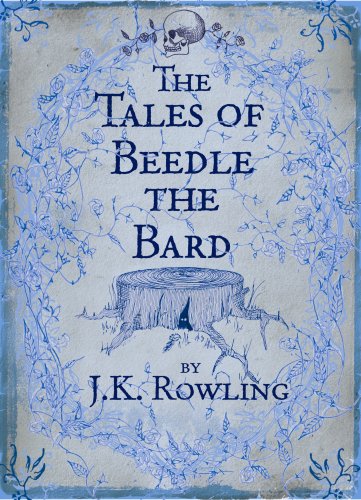
Universal had far more material to work with when devising the other show to be performed in Carkitt Market. This would be based on The Tales of Beedle the Bard, a selection of children’s stories by J.K. Rowling which is featured in Harry Potter and the Deathly Hallows. First produced in a limited edition run of only seven copies in 2007, the book was released to the general public in 2008.
“We chose two stories from this book – The Fountain of Fair Fortune, and the Tale of Three Brothers, which was featured in the seventh Potter film,” says Aiello. “We have music and puppetry, performed by four members of the Wizarding Academy of the Dramatic Arts, which was created by J.K. Rowling in the foreword of Beedle the Bard. We’re like an archaeologist going through these books trying to piece things together, trying to form a show experience, and these four performers are telling these stories using these puppets.”
The puppets themselves were designed by award-winning artist and production designer Michael Curry and his team. The Three Brothers puppets, each about 30 inches tall and fully articulated, are held in one hand by the actors using an oblong handle, with their other hand being used to operate the arms.
Curry was approached about working on the puppets in September 2013. “I run a studio of 38 puppet makers and special effects people and every one of them are absolute Harry Potter die-hard fans, so we had a lot of support. Universal was great, because they came out and visited us and then met my staff, and were like ‘Well, we’ve already found a nest of, you know, experts here.’ Designs were done back and forth and we really wanted to adhere to the designs set forth in the movie, and then J.K. Rowling’s illustrations, too. That was our bible.”
The finale of the Three Brothers performance would feature a 16-foot version of Death, which would have to fit into a small, three-by-four-feet box. “We had to come up with a piece that would extend and cantilever forward, so it’s a compound motion,” explains Curry. “We didn’t want it just to pop up like a horror house. The shoulders, the head would have to collapse down, but that also added to its animation. During the animation stroke, we could control it so the shoulders are moving and the head is curling down…and we found out that it looked actually quite natural, because if you were taking a character and folding it up in the small box, you would curl it up in the fetal position. Something about it emerging from that position is doubly creepy.”
“We have Beedle the Bard, which gives us things that are deeply rooted in the fiction, and Celestina which is something we’ve been able to build from the foundation and create and expand the world,” says Aiello proudly. “What our entertainment team brings to the table when we're creating content is providing life to the amazing architecture that surrounds us. Our role is to give it form and function. Music is a huge part, and the puppets and tales is a different look to anything we do at Universal. It brings the life that Diagon Alley deserves.”
Another smash hit
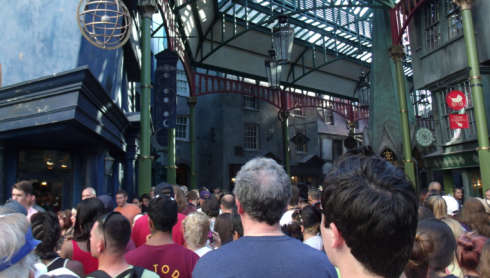
Following the runaway success of the first Wizarding World of Harry Potter, some analysts suggested that Universal would struggle to replicate it with Diagon Alley. “It has great potential to show that what they did with the original Harry Potter-themed area was not a fluke,” said John Gerner, founder of Richmond, Virginia-based Leisure Business Advisors. “[But] now they have the potential to disappoint more than they ever had before. It works both ways.”
The early signs were promising. Huge crowds descended upon Universal Orlando on July 8, 2014, ready for the area’s opening day. Lines began forming as early as 5am, and within an hour of Universal Studios Florida opening there was a two hour wait to get into Diagon Alley. The line for the Gringotts ride soon reached more than six hours, with technical glitches failing to discourage guests from joining it.
The crowds kept on coming. Within a month, the Hogwarts Express carried its one millionth rider, with Universal dishing out free Butterbeer ice cream at Hogsmeade Station to celebrate.
For the Universal Creative team, the sense of satisfaction mirrored that experienced when Hogsmeade made its debut. “People that came in 2010 told us they couldn’t wait to come back,” said Mark Woodbury. “My favorite part is standing inside the London façade and seeing people’s faces as they walk in. Then the discovery starts – they start seeing every detail and seeing everything that there is to do.”
For Universal Parks and Resorts Chairman and CEO Tom Williams, the opening of Diagon Alley was a chance to reflect. “You have to understand that I was part of the opening team for Universal Studios Florida. I was here back in 1987 when this was all still snake-filled marshland. And to see what it’s become – Central Florida’s newest destination resort – is just kind of mind-blowing.”
You can learn more about the creation of Universal Orlando’s rides and attractions by reading Universal Orlando: The Unofficial Story, the first full-length history of the resort.
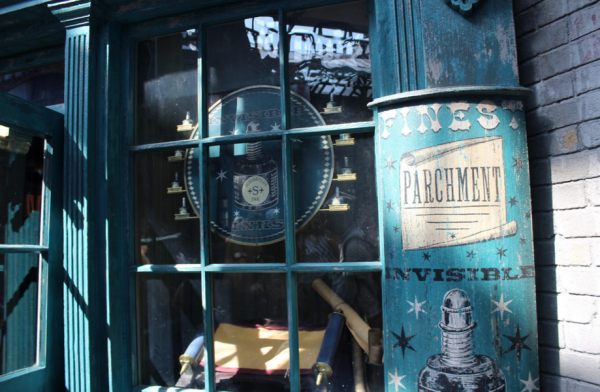
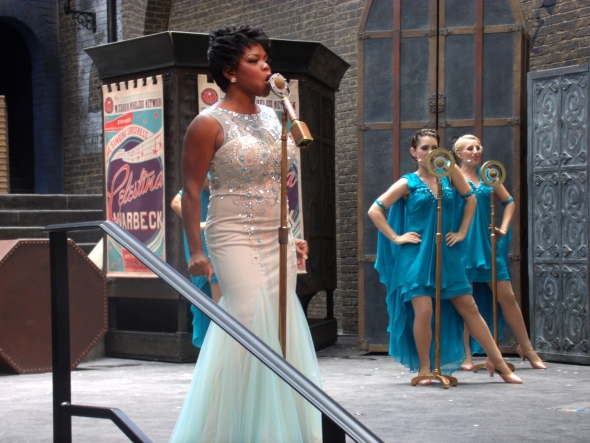
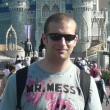
Comments
This is an amazing article. I live in Orlando, and have been to US and IOA since they opened. I learned things I didn't know! Thanks for all the insider info!